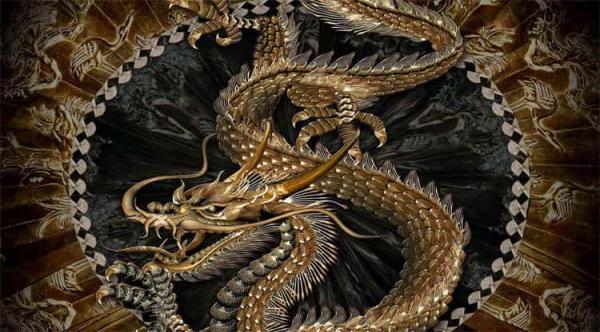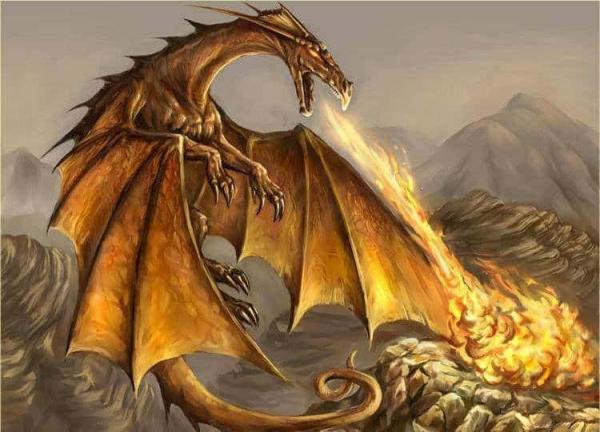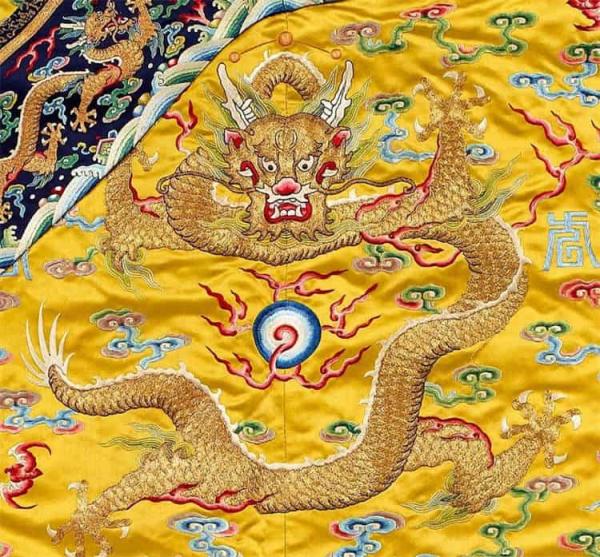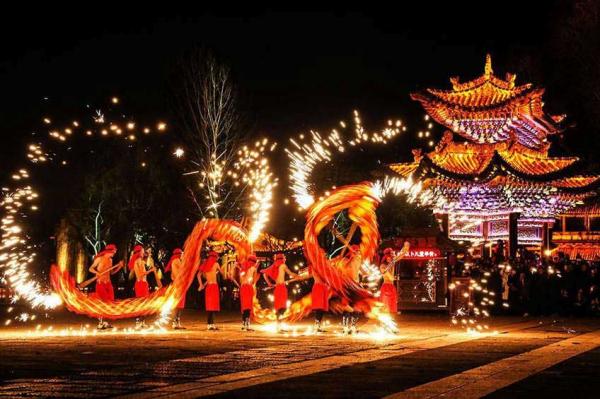Chinese Dragon VS Western Dragon - What are the Similarities and Differences
It may come as a surprise for many to hear this, but the dragon in China and the dragon in the West are very much different. Despite that they were both created in mythologies, Chinese dragon and Western dragon have different roots and origins, different appearances, different cultural connotations, and different images in literature, film and television works.
In China (and many East Asia countries like Japan, Korea, and Vietnam), dragon is a symbol of good luck, propitious omen, and supreme religious authority. Chinese also call themself descendants of the dragon. In Western mythology, the dragon symbolizes a evil beast that needs to be conquered by strength and wisdom.
How are Chinese dragons different from European dragons? Read on to know more.

Similarities between Chinese Dragon and Western Dragon
Overview of the Differences between Chinese Dragon and Western Dragon
1. The Chinese dragon is considered to be divine, while the Western dragon generally represents the evil.
2. Chinese dragon can bring good harvest, and dragon worship was also an important thing in the ancient times. However, in West, people are afraid of dragon, whose power is meant to be dark rule, ruining the world and hurting people.
3. Chinese dragon is a symbol of king, while Western dragon is symbol of devil.
4. Chinese dragon is good dragon, Western dragon is bad dragon.
5. Chinese dragons spray water, while Western dragons breathe fire.
6. The Western dragon has two wings, while the Chinese dragon has four claws. Western dragons are more like dinosaurs or lizards.

Origin of Dragon in China and West
Both Chinese and Western dragons have mysterious origins.
In China
According to the written materials left behind, the description of dragon in China has appeared long ago: The Book of Songs, Zhouyi, Songs of Chu, the Classic of Mountains and Seas, and other books, all have long narrations related to dragon.
In Shuo Wen Jie Zi, there is also an interpretation of the character "龙" (dragon). It can be seen that the dragon appeared a long time ago. The written period is the Eastern Zhou Dynasty, and the unearthed relics can be traced back to the Xia Dynasty. When a large number of jade dragons and a giant stone-shaped dragon were unearthed at the Zhahai site in Fuxin, Liaoning Province, in 1994, experts were initially skeptical about whether they were the dragon in our understanding. And when they did come out, the lines, the shapes, the ready to go, they were impressive.
Therefore, the emergence of the Chinese dragon can be directly traced back to the primitive society period about 8000 years ago.
In the West
The answer to the question of the origin of the Western dragon is also very unclear. At present, there are two main records that can be found.
First, the Bible mentions "Dragon" more than 20 times, and the Bible was written in the 10th century BC, so the Western Dragon should have appeared before that. Ancient Greece's famous "Homer Epic" formed between the ninth and eighth centuries BC, which describes the ancient Greek literature period (2000 BC - 1000 BC or so), when western dragon figure appeared.
So the formation time of the western dragon is also in the primitive society of Greece. The earliest hypothesis is that between 4300 BC and 3500 BC, since clay figures with lizard-like or serpentine heads were found at Eridu site. Based on some features of later Western dragons, we have reason to believe that this may be a variant of earlier dragon images.
Appearance of Dragons in China and West
Speaking of the appearance of the China dragon, it is undoubtedly the closest to the snake in reality. So many scholars believe that the image of the dragon evolved from the snake. According to a survey, up to 40 percent of modern people have a natural fear of snakes, so it is speculated that people were in awe of snakes in ancient times because they admired the flexible and small snakes but had the ability to instantly kill people. This is supported by the fact that Fuxi and Nuwa, the Chinese gods of creation had the human heads and snake gods.
The popular image of the Chinese dragon was not really shaped until after the Yuan Dynasty. Before that, the image of the early Chinese dragon was changeable, with the horns, feet and scales gradually appearing with the change of time.
Western dragons are quite like tuatara. They usually have a jaguar-like body, two huge wings like the bat wings or similar, four legs, a horse-like head, sharp teeth, long and winding tail with a sharp thorn or barb at the end.
There are golden, black, red, green dragons in the West, while there are usually golden, blue and white dragons in China.
West dragon often spray fire or spray poison, their blood are highly toxic. On the contrary, Chinese dragons often spay water, thus thought of Rain God.
Both Chinese dragon and Western dragon has great strength and magical abilities.

Cultural Symbol of China Dragon and West Dragon
To the Chinese, the dragon is a kind of auspicious and divine creature. People respect the dragon and believe that they are always protected by the dragon.
In the ancient Chinese astrology, we often mention, "green dragon on the left, white tiger on the right, suzaku on the upper, and Xuanwu on the lower" -- the four deities guard the four sides. Therefore, dragon is undoubtedly the most powerful and revered among them. In addition, the dragon is the head of the four spirits, ahead of Kylin, Phoenix, and turtle. It can be seen that the Chinese dragon occupies a very important position in Chinese traditional culture.
It is also because of this unique divinity and appeal, dragon attracted the attention of the ancient rulers, who claimed to be the embodiment of the dragon. The clothes of the emperors of many dynasties of China were painted with dragon patterns, and such clothes were called dragon robes. The rulers and dragons reinforce each other, strengthening the imperial power and vaulting the dragon to the top of all real or imaginary animals.
In traditional Chinese culture, there are few negative words against the dragon, while in Western culture the dragon is almost synonymous with all negative meanings , such as evil and vicious, therefore, bad dragon.
Different Images of Dragon in Religion, Literature and Movie
In China, the earliest records about dragons are seen in “The Classic of Mountains and Seas”, the "book of songs", "chu ci" and the literature. In "Shuo Wen Jie Zi", the dragon is depicted to be the leader of the squamous animals. It can go to the dark or in the light. It can get smaller or get bigger. It can get shorter or get longer. It can fly in the sky during the spring equinox and dive under the water during the autumn equinox. So we can see that in the early Eastern Han Dynasty, people have built the basic understanding of the biological "dragon".
However, in the Book of Rites, the status of the dragon is even higher, by saying that it is the first of four spirits. Therefore, in the eyes of the Chinese people in all generations, the dragon has become a symbol of auspicious luck with its rarity, powerful ability and noble status.
However, when it comes to the origin of dragon culture, historians tend to view the dragon as a combination of totems such as snakes, crocodiles and so on.
In the West, the earliest records about the dragon can be found in Homer's Epic, and then the legend about the dragon is roughly related to two important documents, one is the Bible, the other is Beowulf.
The chapter 12 of Bible "Revelation" records that the dragon was the devil who confused the world. The reason for this is that the Bible was written at a time of rapid change in Western religion. And this description has planted the idea that dragon is the source of evil in the minds of most Westerners. In "Beowulf", a book of the biographies of Western heroes, the first monster the hero fought was a dragon. It can be seen that dragon made a bad impression on the Westerners.
Due to the cultural exchange and dissemination, the dragon in the West has gradually changed from the original image of evil spirits, and in many films and television works, there are also positive images of the dragon. Films such as "Dragon Heart", "Eragon" and so on, all promote the courage and goodness of dragons.

Final Thoughts
To sum up, the fundamental reason for the different dragon cultures between the East and the West lies in the different social backgrounds. The dragon in the East is often positive, positive and has the supreme position.
Many traditional customs in China are also related to dragon. For examples, Chinese dragon design on bronze ware, Chinese dragon kite, the dragon boat race on the Dragon Boat Festival, the dragon and lion dance on the Chinese New Year, and the paper dragon on the second day of February to pray for good weather in the New Year. Even there is the dragon year in the Chinese zodiac signs. In addition, the combination of dragon and phoenix is also common in today's Chinese weddings, which means a happy marriage.